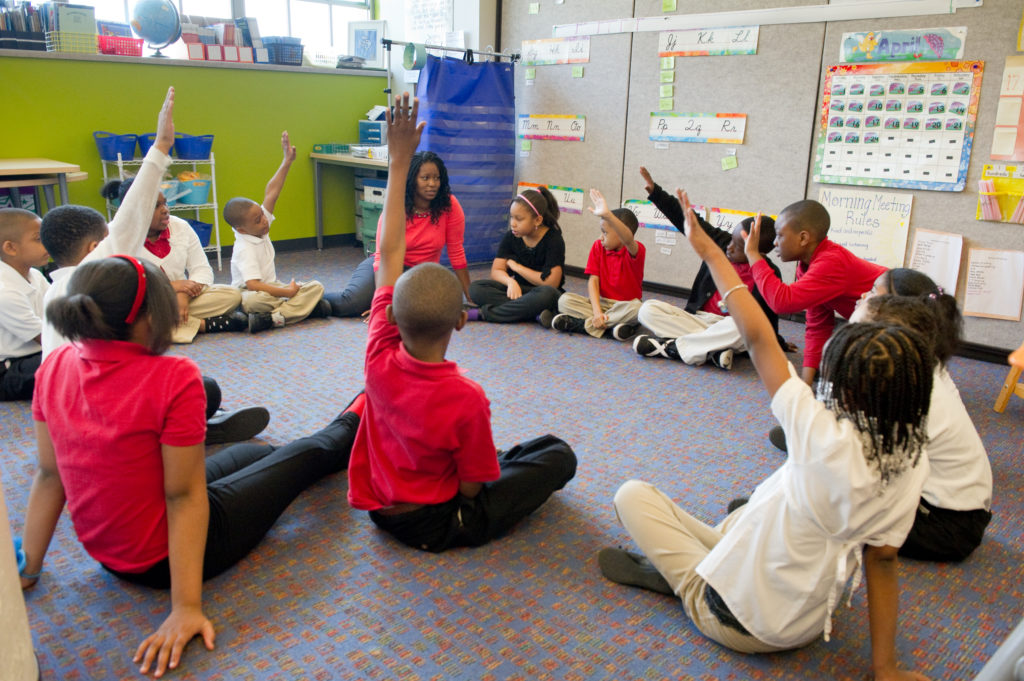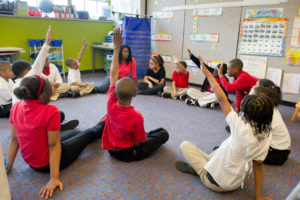
 Question: I’ve had pretty good success using time-out with most children. I have children go to time-out to regain their self-control as they start to lose it. But what about the child who just refuses to go to time-out when told to? I keep trying different things, and nothing seems to work. Any ideas?
Question: I’ve had pretty good success using time-out with most children. I have children go to time-out to regain their self-control as they start to lose it. But what about the child who just refuses to go to time-out when told to? I keep trying different things, and nothing seems to work. Any ideas?
Answer:
This is something that most teachers can anticipate facing from time to time. A key in handling these situations is to avoid power struggles as much as possible, since they are counter-productive for everyone.
A first step, even when there is only one resister, may be to review for the whole class the goals and procedures of time-out. There are three essential things to accomplish in this review:
After this re-teaching, I would sit down with the resistant student individually and ask what s/he understands about the reasons for time-out. I might say “Tell me one good reason to have timeout in our classroom.”
Then I might say “Tell me one reason you think some kids might not like to go to time-out.” The answer may reveal possible reasons for the student’s own reluctance. To work best with students who resist time-out, we need to know why they resist. Is it a problem of shame or fear? If so, is it a developmental issue? Remember, for example, that seven-year-olds are generally terrified of making mistakes and being wrong, and that older students may have a heightened sensitivity to being singled out and made visible to their peers.
Knowing what’s beneath the student’s resistance may guide us in handling the situation.
Sometimes simply avoiding using the word “time-out” helps. Rather than using that term, which can have a negative connotation for some students, I handed one student a red card (a system used by referees in soccer, for example). With another student, when I tugged at my ear, it meant “go to the table and take a five-minute break.” Some teachers say “take a break.” One middle-school teacher says “take a vacation.”
Often students respond to modifications in how time-out is done, especially modifications they helped devise. Here are some possibilities:
For students who are more oppositional and become confrontational when refusing time-out, it’s important for teachers to make it clear that time-out is a must-do, not a choice. When the teacher sends students to time-out, students must go. They may have some input about where or how, but not if, time-out is done. The teacher therefore needs to be ready with a backup plan. If a student simply refuses to go, what happens?
In the Responsive Classroom approach, teachers have a pre-arranged buddy teacher. When a
student refuses to go to time-out (or continues to have problems during time-out), the teacher sends for the buddy teacher, removing herself or himself from direct interaction with the student and thus preventing a power struggle. The buddy teacher comes to take the child to time-out in the buddy teacher’s room. Removed from the stimulation of their own classroom and away from the action in which the misbehavior was occurring, students often have an easier time collecting themselves. If time-out in the buddy teacher’s room isn’t enough to help the child regain self-control, another adult is called to take the student to time-out in the principal’s office or another designated cooling-off place in the school.
In using this sequence of steps, our message is this: “I am willing to help make time-out work for you so you don’t have to be afraid or be extra mad. But when teachers ask you to go, you have to go. That’s your job. Either you go in the ways we practiced, or Ms. _______ will come take you to her classroom. And if that doesn’t work, then Ms. ______ will come take you to the office.”
Some children will never test their teacher’s seriousness about sticking to this sequence of events. A few will. With the testers, there may be a scene the first time. (In tough situations, teachers have been known to take the rest of the class to the library or some other place while an administrative support person works with the child.) Most children test only once.
Keep in mind, though, that even after children are done testing, they may need practice and reminders to anticipate and prepare for the plan that’s been put in place. Go over it step by step. “What happens when I say ‘Jessica, time-out’? What will you do? Where will you go? How will I know you are ready to come back?” I would have Jessica send me to time-out, using the agreed-upon words or signals. I would model going to time-out in an appropriate way, then ask her to model it. I would carefully go over all the positive goals of time-out and practice getting still and calm.
Time-out is one way to help children develop self-discipline. For those children who resist and struggle, we must be inventive and flexible. I encourage you to be resourceful but also to remember that limits are necessary for the well-being of the class as well as that of the individual student.
Ruth Sidney Charney has taught children and teachers for almost 30 years.